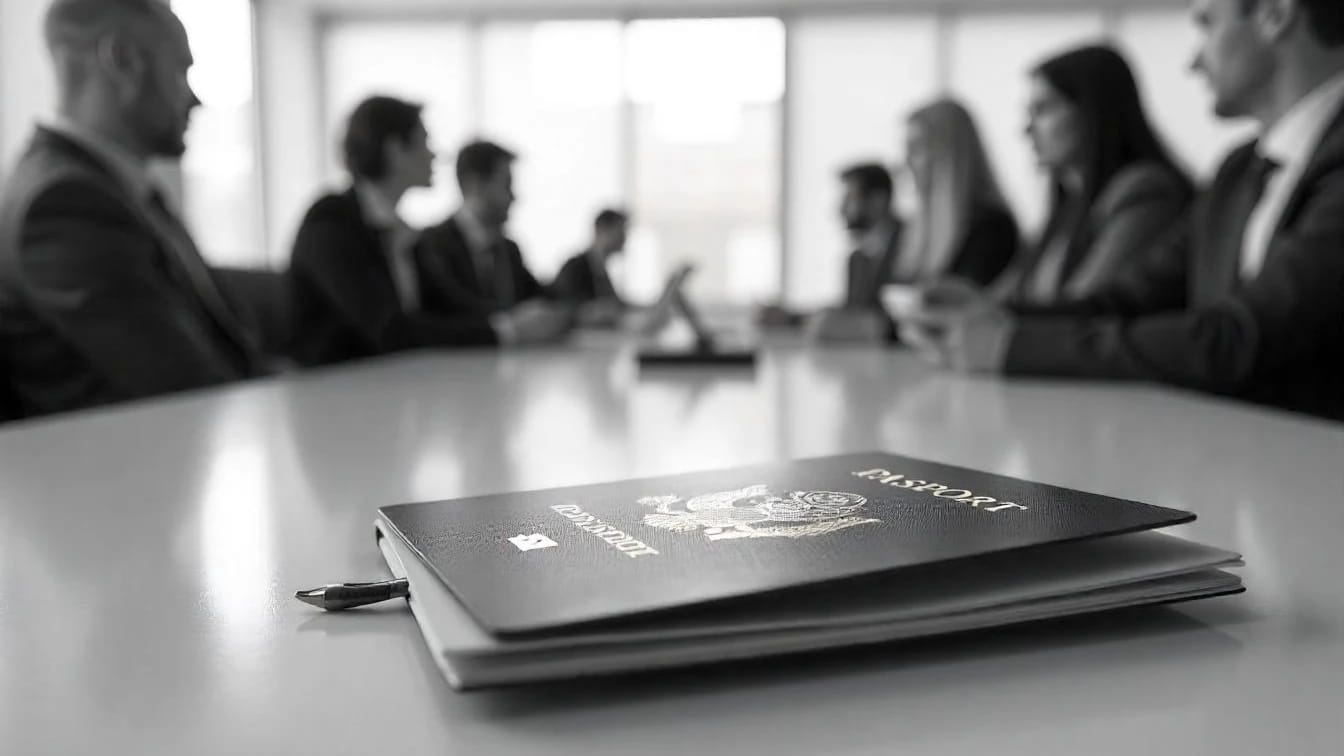Everything you need to know about the L1 visa extension, renewal process in the U.S., stamping rules, rejections, timelines, and L1A/L1B validity limits for 2025.

This is a common question among L1 visa holders "Can I extend my L1 visa in the U.S. without having to start over or go home?" Let’s walk through the process step by step—what qualifies, what’s different for L1A vs. L1B, how long the extension takes, and what to do if things go sideways.
Whether you're already working in the U.S. or managing your timeline from abroad, this guide will make the L1 visa extension journey a lot clearer.
And if you need attorney help along the way, Beyond Border is here to match you with vetted immigration professionals who specialize in L1 matters.
Your L1 visa extension is simply a request to extend your stay in the U.S. under the same L1 status you were granted originally. More time to complete your assignment, manage U.S. operations, or continue your specialized work.
Most L1 visas are granted for an initial period—L1B for up to 3 years, and L1A for 1 to 3 years depending on the business setup. Extensions can keep you legally in the U.S. without having to re-enter or apply from scratch.
But timing matters. You should apply for an extension well before your current L1 visa expiry—ideally around 6 months prior. That gives USCIS enough time to review your request and avoids gaps in work authorization.
Learn more about visa terms directly from USCIS.
If you're in the U.S. on an L1B visa, your initial term is usually 3 years. After that, you can apply for an L1B visa extension after 3 years, but the total maximum period allowed is 5 years.
Suppose you started in 2021. If your company wants to extend your stay beyond 2024, you could apply for an additional 2-year extension—but only if you haven’t hit the 5-year mark. But keep in mind—not all L1B extensions approve easily. One common hurdle? Missing updated documentation or not clearly demonstrating that your specialized knowledge is still essential to the U.S. role. Because of this, L1B extensions tend to face a bit more scrutiny than L1A renewals.
But with the right preparation, it’s entirely possible to avoid these pitfalls. That’s where expert guidance makes all the difference. Need help making your extension? The team at Beyond Border can review your case and connect you with attorneys who know how to structure a strong case for you.

The managers and execs on an L1A—you’re allowed up to 7 years total in L1 status. That means if you’re nearing year 3, you can absolutely apply for your L1A visa extension—sometimes even twice, depending on how long you've already stayed.
If you started with a one-year visa due to a new office setup, you can apply for a 2-year extension and then additional increments—until you reach that 7-year limit.
When you're applying from India, you might wonder: Is there a separate process for L1A visa extension stamping in India? The rules around stamping can be slightly different than for extensions filed from within the U.S. We'll cover that more in the stamping section.
To keep things smooth, make sure your employer provides strong documentation—like org charts, performance reviews, and business operation details. For smoother coordination, Beyond Border can help prepare the right forms and evidence with legal support.
For employer obligations and forms, check USCIS.
Back in the pandemic and Trump administration days, L1 visa extensions (and H1B renewals) got much tougher. You may remember visa bans, long delays, and more scrutiny for renewals. These restrictions created chaos for people waiting on L1 visa extension status updates.
Thankfully, in recent years, many of those rules have been reversed. Now, it’s easier to file for a visa extension or renewal without facing unnecessary rejections. If your extension was denied in the past, don’t assume that’s how things will go again. Today, your L1 visa extension in the U.S. has a higher chance of approval if filed correctly.
Beyond Border can pair you with an attorney who understands the latest USCIS policy changes and can guide you through a successful reapplication or appeal.
You’re probably wondering: How long does an L1 visa renewal take in the U.S.? The short answer is—it depends, but usually 2 to 6 months, depending on whether you choose regular or premium processing.
Here’s a quick breakdown of the typical L1 visa renewal in the U.S.:
Want to fast-track the process? Premium processing (15 calendar days) is available for a fee. Stay updated on processing times directly at USCIS.
If your extension is approved in the U.S. but you travel abroad, you’ll need new L1 visa extension stamping in your passport. This usually means booking a visa renewal appointment at a U.S. consulate, typically in your home country.
Here’s what you should know:
To avoid long waits, check with the consulate early. And to get help booking appointments or understanding waiver eligibility, reach out to Beyond Border.
The most important thing is to understand why it was denied.
Here are some common reasons:
Once denied, you’ll either need to:
If you're facing an L1 visa extension rejection Beyond Border can help you evaluate next steps with legal experts who specialize in tough cases.
For more on legal options after a denial, check USCIS.

Q: Can I extend my L1 visa after it expires?
A: No. You must apply for the extension before your visa expires. If you miss the deadline, you'll need to leave the U.S. and apply for a new visa abroad.
Q: What happens during premium processing?
A: USCIS guarantees a response in 15 calendar days—but it's a paid service.
Q: Is there a limit on how many times I can extend my L1 visa?
A: Yes. L1B maxes out at 5 years; L1A at 7 years.
Q: Can I travel during my L1 extension process?
A: It’s risky. Travel while the extension is pending could delay or jeopardize your application.
Q: My L1 visa is valid, but my I-94 is expiring—what do I do?
A: File your extension based on the I-94 expiry date, not the visa stamp.
For more official answers, check USCIS.
Whether you’re preparing your first L1 visa extension in the U.S., reapplying after a rejection, or just confused about interview waivers—Beyond Border is your one-stop solution.
We’ll match you with experienced immigration attorneys who understand the ins and outs of L1 visa law and will help you avoid mistakes that cost time and money.
Start your L1 visa extension journey with expert help from Beyond Border.